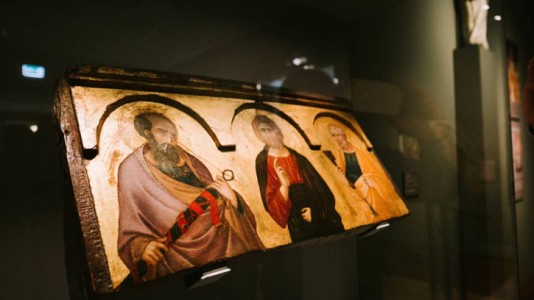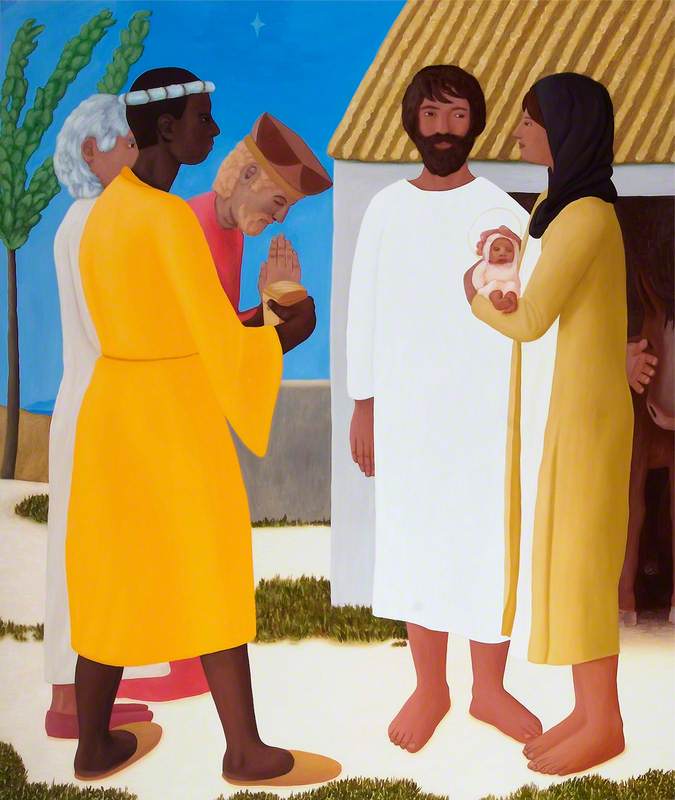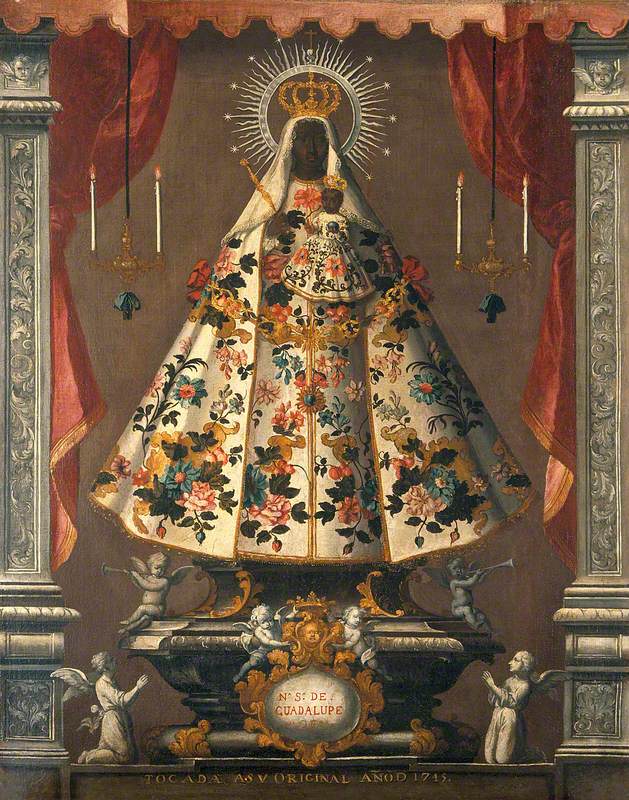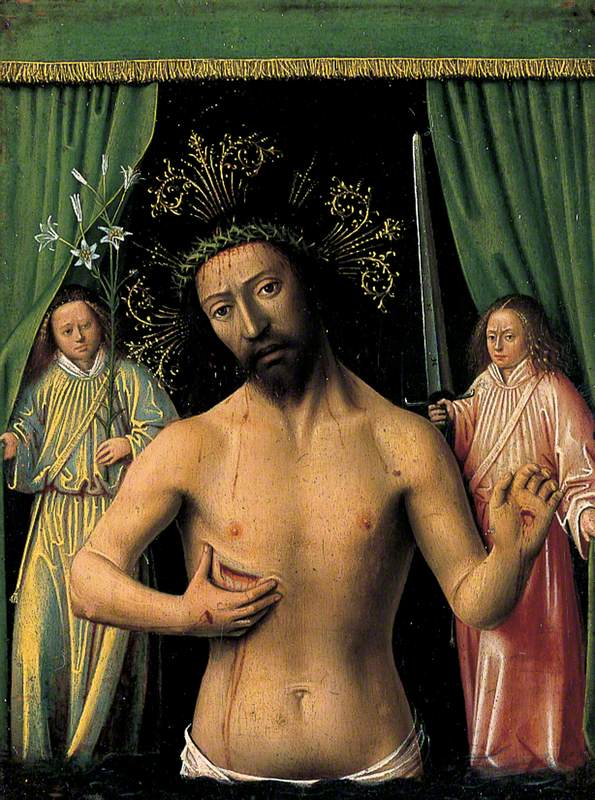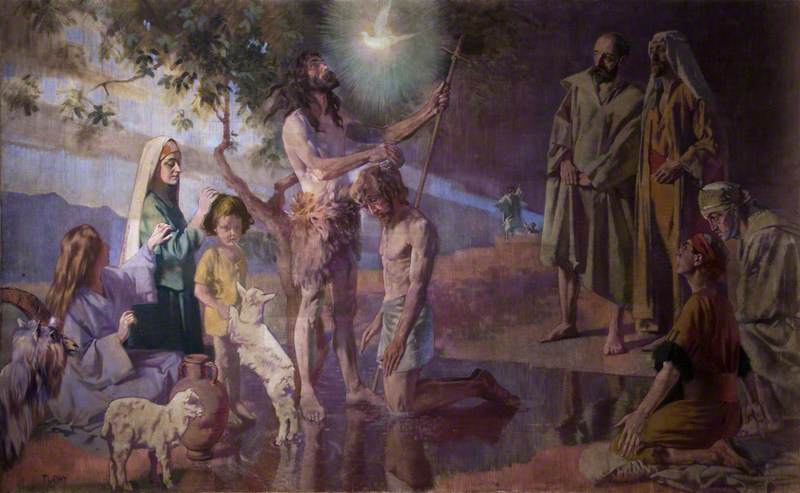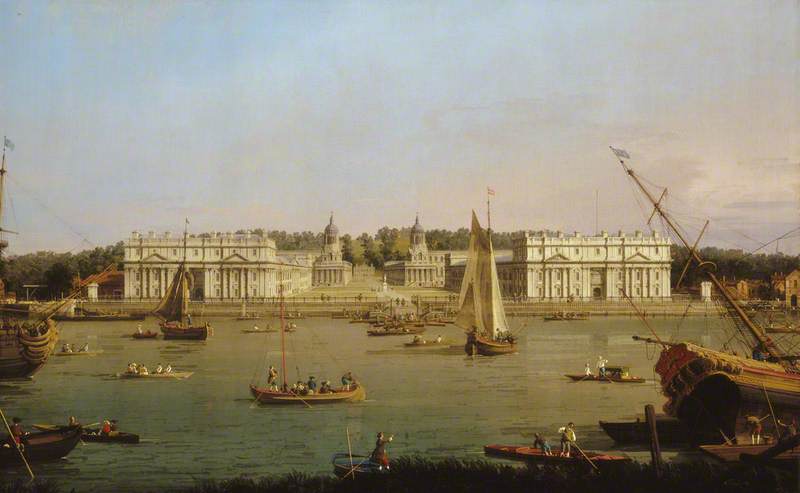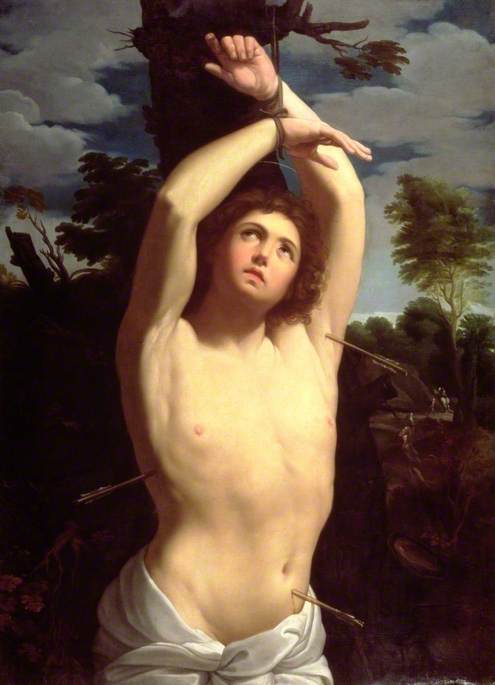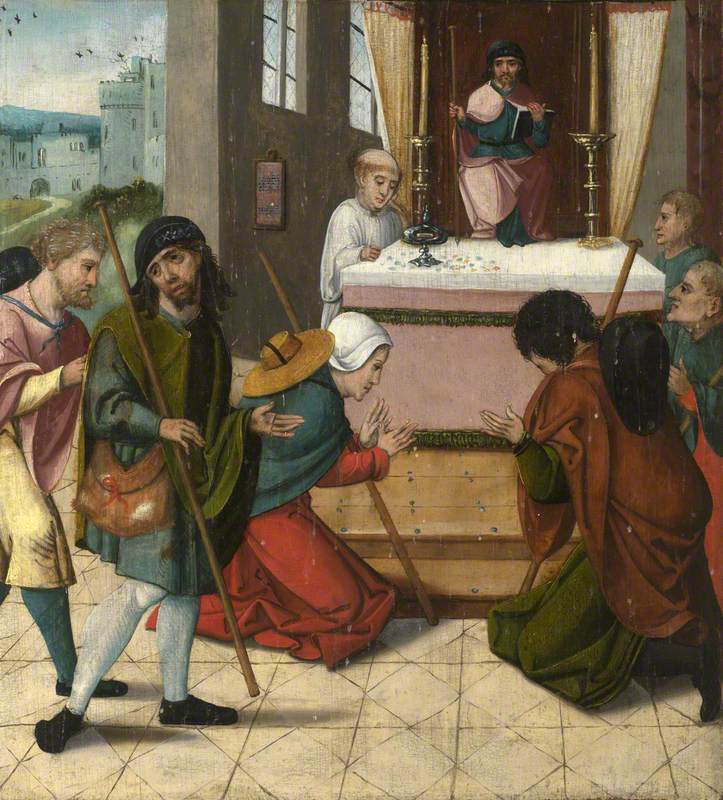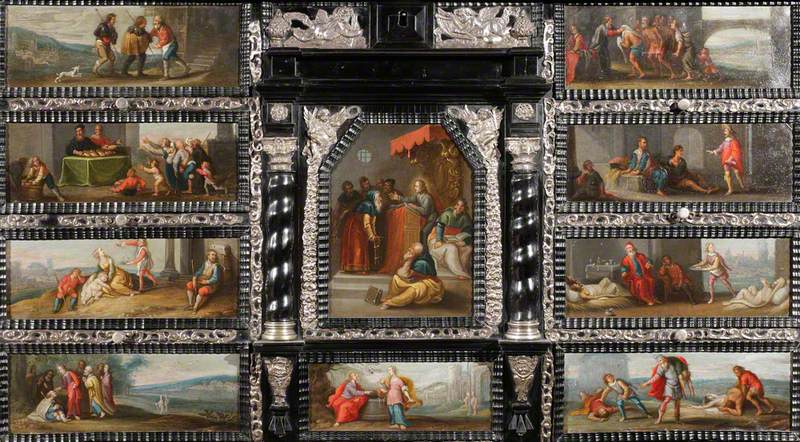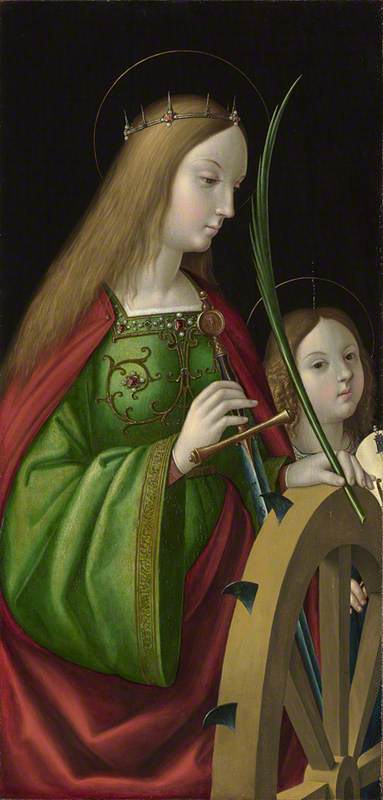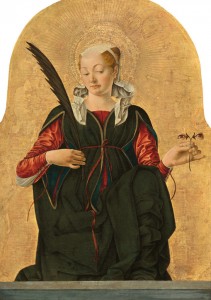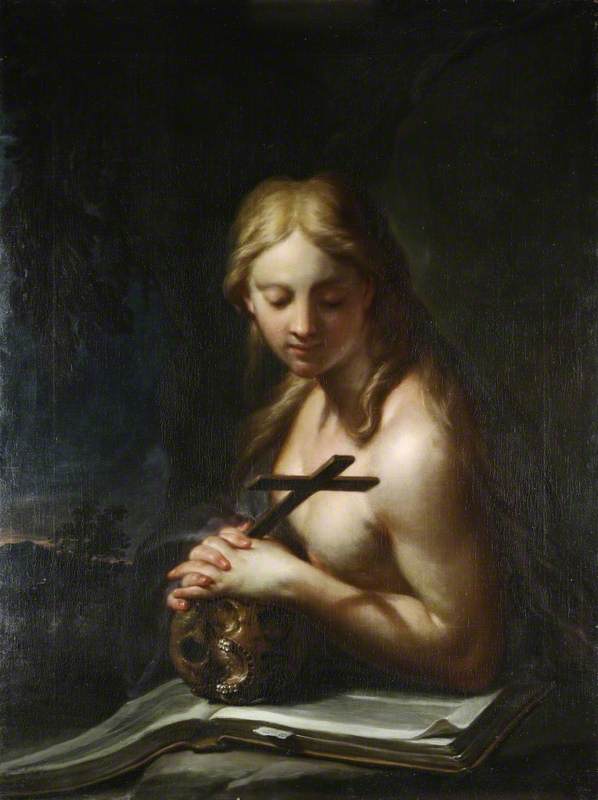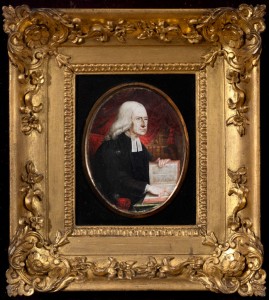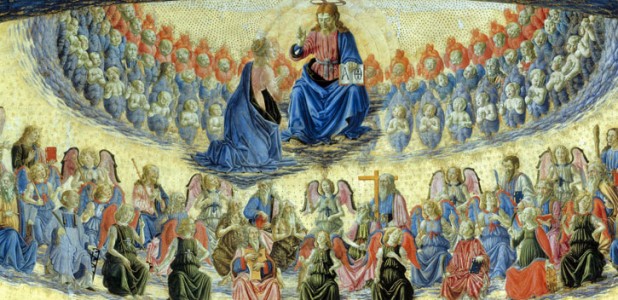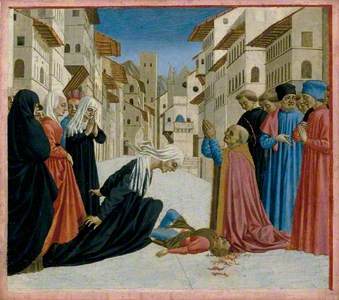Little is known about the early life of the Renaissance painter Domenico Veneziano, but he was apparently born in or near Venice, as his nickname indicates, and received his training in Rome and Florence. What we do know is that his principal surviving work is the Saint Lucy Altarpiece (c.1442–1448), which stood on the high altar of the little church of Santa Lucia de’ Magnoli in Florence. The vivid A Miracle of Saint Zenobius formed part of the predella (or base) of the altarpiece and, together with another of the predella panels executed in tempera (The Annunciation), it can now be found in the Fitzwilliam Museum in Cambridge.
Displaying his narrative gifts, Domenico here depicts a miracle said to have been performed by one of the patron saints of Florence, the fourth-century bishop Zenobius. Florentines may no longer name their children Zenobius, but they used to! During the early Renaissance, the career of Saint Zenobius in Florentine devotion was both meteoric and spectacular. His corpse was rediscovered in the Cathedral crypt in 1331, leading to the eventual transferal of his relics into a shrine in the new Cathedral in 1439. His feast day on 25th May was marked with candlelit processions led by trumpeters, special prayers, and commemorative meals with plenty of wine, food and flowers.
Although reputed to have resurrected several people, in this panel Zenobius is shown praying for the revival of a young boy, as his grief-stricken mother mourns over his body surrounded by tightly clustered groups of female and male observers that focus the drama. According to his fifteenth-century biographer (the Dominican archbishop of Florence, Saint Antonino), Zenobius had been entrusted with the care of a sick boy by a mother making a pilgrimage to Rome. One day, while the saint was participating in a procession at the church of San Pier Maggiore, the child died. The mother returned the same day and, finding her dead child, desperately picked up his body and ran to find Zenobius. She met the procession on the Borgo degli Albizzi, and laid down her son’s body at Zenobius’ feet, 'full of tears, rending her garments, and tearing her hair with grief'. Zenobius, 'after he had offered up a prayer and made the sign of the cross over the boy, restored him to his mother, and brought him back from the dead'.
In Renaissance Italy, centuries before the advent of immunisation and antibiotics, the life of a child was a fragile and tenuous gift, and even the most comfortably-off upper class city dwellers had to endure infant mortality within the family circle to an extent virtually unimaginable today.
Towns and cities were peppered with shrines, and the faithful came from near and far in order to leave votive offerings (painted wooden boards, wax anatomical models, clothes, candles) in gratitude or expectancy of cures and other miracles. Prayers would have been directed to altarpieces featuring popular saints specifically because of their care for children, by parents nursing a sick child, by those hoping-beyond-hope for the miraculous recovery of a recently dead child, or by mourning parents concerned for the welfare of their remaining children.
Parents of Domenico’s day, who looked closely at his scene, would have reacted with emotion to the powerful contrast between the grieving gesture of the mother, clothed in black with her headdress flying out behind her, wailing with her mouth fully open, and the calm, pious, but beseeching pose of Saint Zenobius. Viewers would also have been drawn into the picture through Domencio’s use of local colour and representation of realistic details, such as the street of Borgo degli Albizzi with its palazzi, the church of San Pier Maggiore, the city gate, and the hills beyond.
Domenico was careful to create the sort of plausible relation between figures and architecture that the Italian humanist, architect and art theorist Leon Battista Alberti considered essential to narrative painting, and which he had outlined in his ground-breaking 1435 treatise De Pictura (‘On Painting’). Although Domenico imaginatively manipulated the perspective system in order to enhance the effect of dramatic urgency (look at the foreshortened facades of the buildings), the key plunging diagonal in the panel extends through the child’s body and his mother’s torso, and has been incised into the surface of the painting.
The precision of Domenico’s storytelling and composition, combined with the disturbing violence and immediacy of the scene make this an evocative work, and its high emotional pitch still resonates today.
Julia Biggs, Art Historian – Renaissance Art History Cambridge

